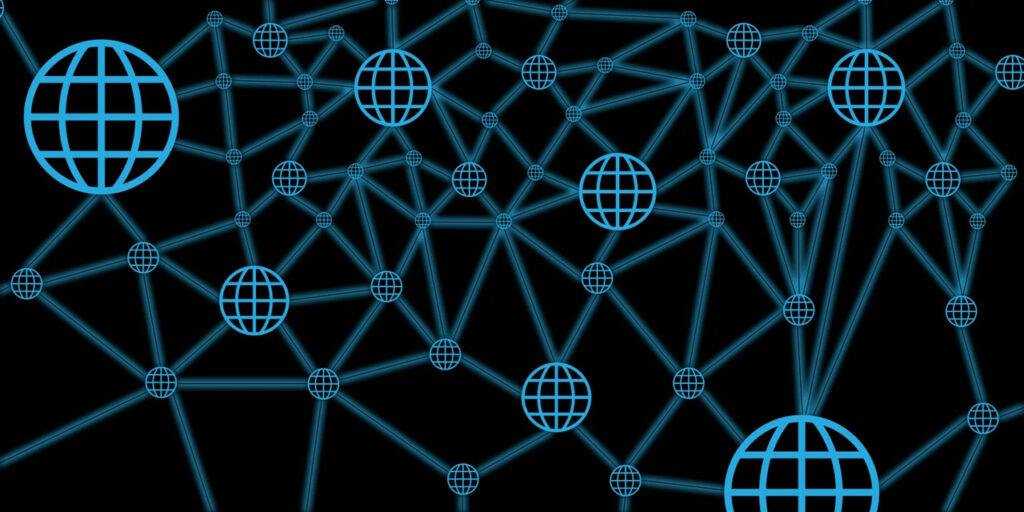What is the decentralized web?
There’s a lot of Buzz about the decentralized web these days. But understanding what
exactly that is can be difficult. In this article, we’ll explain what the decentralized web
will be and how it works.
Web 1.0
To start, we need to realize that the internet is going into its third generation. The first
generation was when different pages were all connected through hyperlinks. It was very
messy and not user-friendly. Thankfully, it did not last forever.
Web 2.0
Web 2.0 was the second generation of the internet. It was the generation of the internet
where users started generating content. Oftentimes making websites and platforms
what they are. Think about sites like YouTube, Facebook, Twitter, and Instagram. You
don’t use these sites because you like the way they look or because of the people who
built them. You use them because of the user-generated content.
Web 2.0 created some of the best opportunities for artists and content creators. For the
first time in history, you could create and distribute videos, articles, pictures, courses,
and anything else to millions of people. You didn’t need to get on TV. You didn’t need to
get discovered. You just needed to start creating and putting yourself out there.
As great as this past generation has been, it has one major flaw. People control these
platforms. And anything controlled by people will inevitably become corrupt.
For one, each of these massive platforms are centralized. They are controlled by
companies. A small group of individuals change the rules and incentives on their
platforms whenever they want to. Tomorrow, YouTube could fundamentally change its
recommendation algorithm. And there isn’t anything you can do about it.
Another problem with Web 2.0 platforms is that they are prone to censorship. Social
media sites like Facebook, Reddit, and YouTube have become notorious for their
censorship of content. Despite public pushback, these companies continue to do as they
please. And the user base is powerless to stop them.
Perhaps the worst feature of these platforms is their business models. They collect and
document everything they can about you. They harvest your data. And then sell it to
advertisers. This may not seem nefarious at first. The more you look into it, the scarier it
Gets.
So, what is the solution to all of these problems? What does the next generation of the
internet look like?
Web 3.0
Web 3.0 is the next generation of the internet. It will be built on blockchains,
cryptocurrency, and peer-to-peer Networks. Let’s explore exactly how this will work.
Blockchains
Blockchains are records of data that cannot be changed or altered. These records are
stored inside of all the nodes inside of the network. And on top of that, the records are
publicly available to anyone who wants to see. Blockchains are the opposite of secret
algorithms by big tech.
Cryptocurrency
Cryptocurrency will be an integral part of web 3.0. It will be used to verify identity, align
incentives, and secure the network.
Peer-to-peer
Another feature of web 3.0 will be how nodes communicate. Instead of communicating
with one centralized server, you will communicate with other nodes. This means the
records inside of the blockchain will be decided upon by the nodes in the network. Not a
central server inside the Facebook HQ.
This secures the network from fraud and censorship. If one node tries radically changing
everything in the network, its data will be discarded by the rest of the network. I’m going
forward, the network can black list that note.
There won’t be a single source of truth. There will be many. And anyone who contributes
to the network will be able to influence that truth.
How it works
Understanding how all this technology will come together to create the next generation
of the internet is not easy to understand. But it will look something like this.
Dapps – Decentralized applications
Decentralised applications will power web 3.0. These projects are open source,
decentralized, and cannot be shut down because they run on the blockchain.
There are two components to the internet as we know it today. The front end and the
back end. Both are necessary to keep the internet functioning as we know it.
Front end
The front end is created using HTML, CSS, and JavaScript. This is typically the interface
you see when you’re on the internet. It’s the login page on Facebook. The home screen
on YouTube. The shopping page on Amazon.
Back end
The back end is the code that runs on the server. This is typically code you don’t see or
think about as an average user. This is where YouTube and Facebook store their
recommendation algorithms. This is where Amazon stores all of the product
Information.
Dapps use smart contracts as the backend of the website. It’s where the data will be
stored for later use in the front end.
This back end code will be executed on a blockchain like Ethereum or Cardano.
There are already popular dapps people use everyday. One example is uniswap, a
decentralized exchange that allows anyone to trade cryptocurrency. There is no central
authority involved. Only traders, and liquidity providers.
Another example of the decentralized web in action is the Ethereum Named Service.
This is a domain service that allows you to buy a .eth domain for your Ethereum wallet.
The entire service is decentralized and runs on the Ethereum blockchain.
